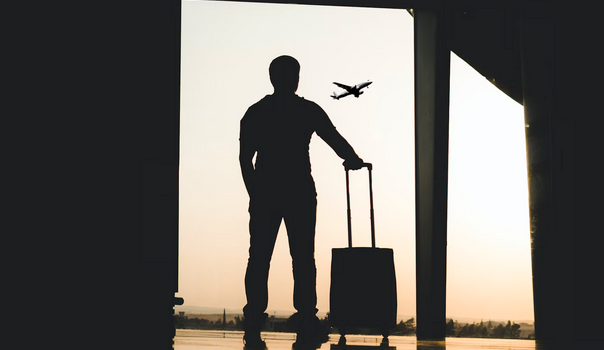Pre-Travel Preparation
Gather Documents Together
Ensure you have all necessary travel documents days before you leave for the airport. This includes your passport, driver's license, boarding pass, travel itinerary, and any visas required for your destination. Keep these documents organized in a travel wallet or a dedicated section of your carry-on bag for easy access. If you have an issue with your passport before travelling then you can look into an expedited US passport so that you don't miss your flight.
Check-In Online
Save time and reduce stress by checking in for your flight online, which most airlines allow starting 24 hours before departure. Print your boarding pass and save it to your mobile device to avoid long lines at the airport.
Pack Smart
Pack efficiently to avoid any surprises at security checkpoints. Follow the TSA guidelines for liquids, ensuring all containers are 3.4 ounces or smaller and fit into a quart-sized, clear plastic bag. Use packing cubes to organize your luggage, making it easier to find items and repack if necessary.
Travel Light
Whenever possible, travel with carry-on luggage only. This saves time at check-in and baggage claim and reduces the risk of lost luggage. Choose a lightweight, durable suitcase that meets airline size restrictions.
Arrival at the Airport
Arrive Early
Arriving at the airport two hours before domestic flights and three hours before international flights allows time for check in, security, and getting to your gate without rushing.
Know the Layout
Did you know you can see the airport layout before you arrive? Many airports have maps available on their websites or apps that show the locations of check-in counters, security checkpoints, restrooms, and gates. Knowing the layout can help you navigate more efficiently.
Security Checkpoint Strategies
Prepare for Security
Have your documents (ID and boarding pass) ready as you approach the security checkpoint. Wear slip-on shoes to make removing them easier, and place all electronics and liquids in an easily accessible part of your bag. Consider enrolling in TSA PreCheck or Global Entry to expedite the security process.
Stay Calm and Polite
Security checkpoints can be stressful, but staying calm and polite can make the process smoother. Follow instructions from security personnel and be patient with other travelers. A positive attitude can go a long way in reducing stress.
Waiting at the Airport
Find a Comfortable Spot
Once you're through security, find a comfortable spot to relax while you wait for your flight. Look for areas with ample seating, power outlets, and Wi-Fi. Many airports have designated quiet zones or lounges that offer a more peaceful environment.
Stay Hydrated and Nourished
Airports can be pricey, so bring drinks and snacks – many now have places to fill empty water bottles. Staying hydrated and well-nourished can significantly boost your mood and energy during travel.
Entertainment and Productivity
Keep yourself entertained or productive while waiting for your flight. Download movies, books, or podcasts to your devices before leaving home. Use this time to catch up on work, read, or simply relax.
Boarding and In-Flight Tips
Board Early
Listen for boarding announcements and be ready for when your group is called. Boarding early ensures you have enough time to find your seat and store your carry-on luggage. Many airlines offer early boarding if traveling with children or needing extra assistance.
In-Flight Comfort
Pack items to enhance your flight comfort, such as a neck pillow, eye mask, and noise-canceling headphones. Dress in layers to adapt to changing cabin temperatures. Stay hydrated and avoid excessive caffeine and alcohol.
Dealing with Delays and Cancellations
Stay Informed
Keep an eye on flight information screens and airline apps for updates on delays or cancellations. Sign up for text or email alerts from your airline to receive real-time notifications.
Have a Backup Plan
In case of delays or cancellations, know your options. Familiarize yourself with your airline's policies on rebooking and compensation. Have contact information for your airline and travel insurance provider handy.
Stay Calm and Flexible
Travel disruptions can be frustrating, but staying calm and flexible is key. Approach airline staff politely and patiently when seeking assistance. Consider alternative travel routes or options if necessary.
By following these tips, you can navigate airports with ease and enjoy a stress-free travel experience. Preparation, organization, and a positive attitude are your best tools for making your journey as smooth as possible. Happy travels!



